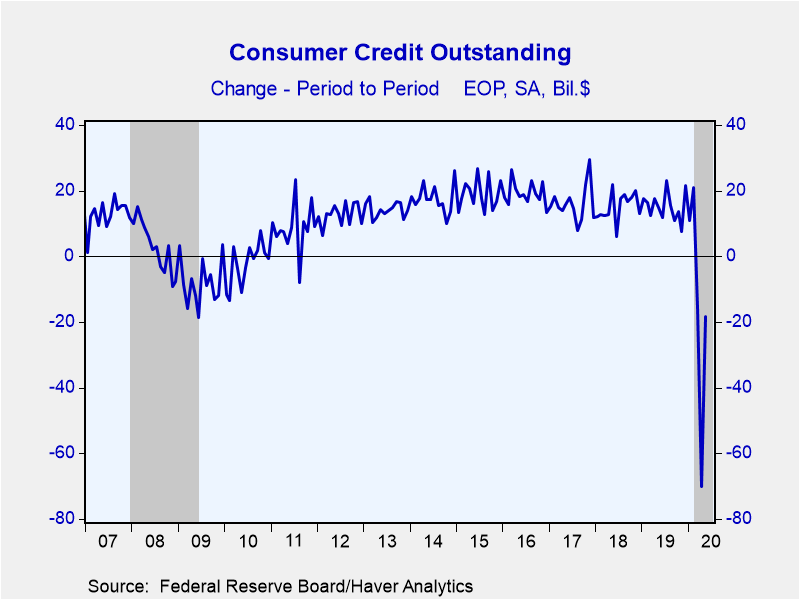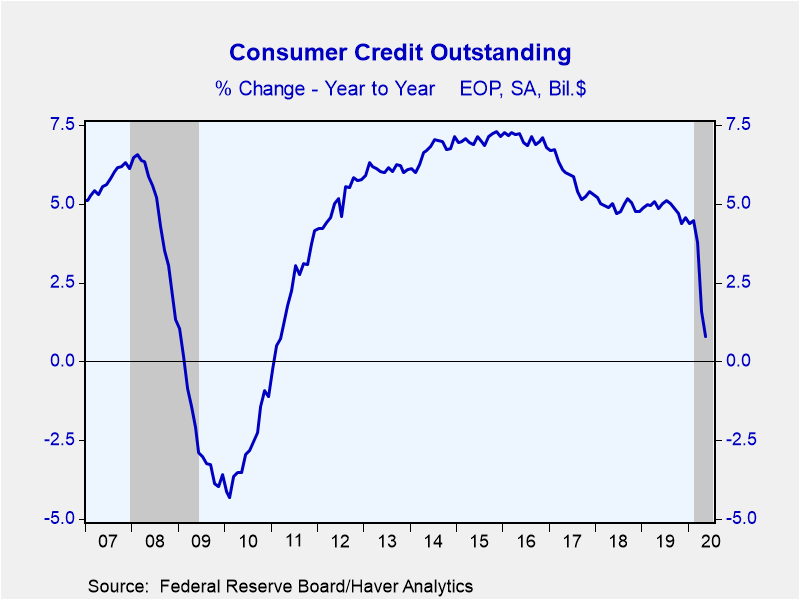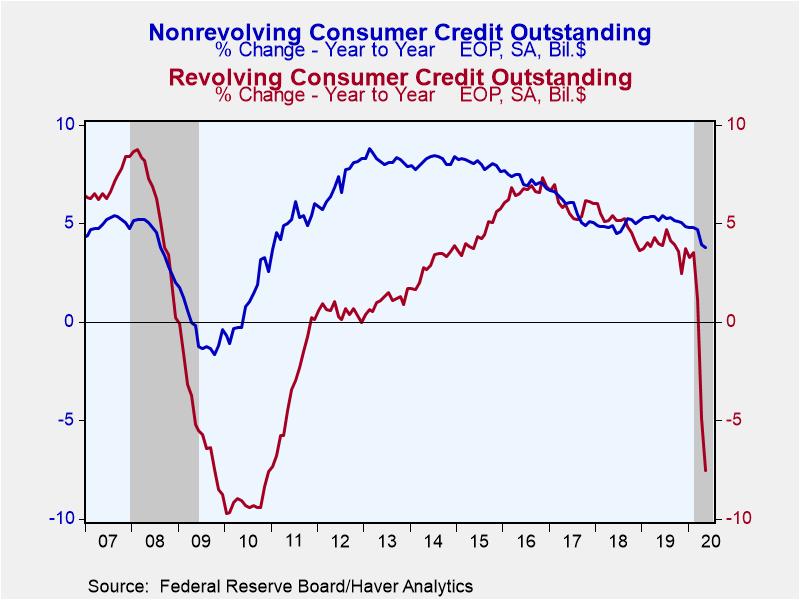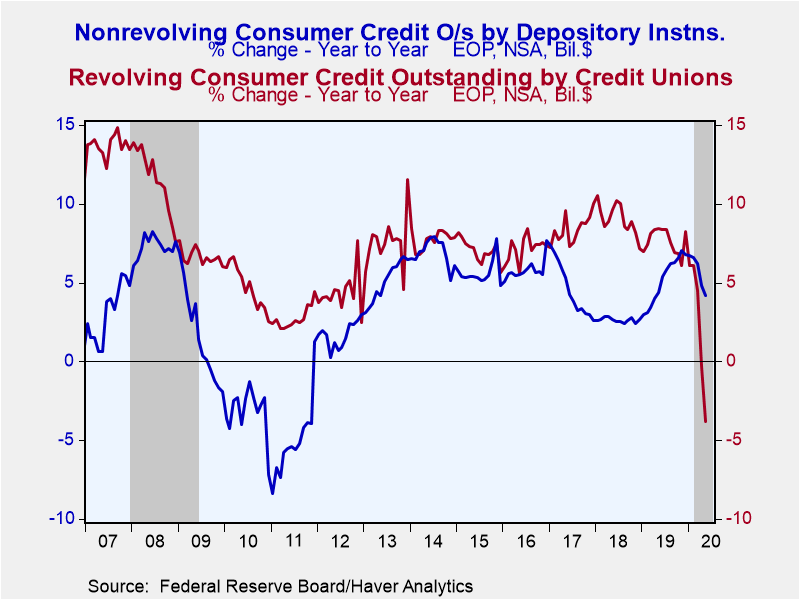 Global| Jul 08 2020
Global| Jul 08 2020U.S. Consumer Credit Continues to Decline
by:Tom Moeller
|in:Economy in Brief
Summary
• Reduced credit card usage leads the falloff. Consumer's are pulling back as unemployment rises. Consumer credit outstanding fell $18.3 billion (+0.8% y/y) during May following a $70.2 billion April decline, revised from $-68.8 [...]
• Reduced credit card usage leads the falloff.
Consumer's are pulling back as unemployment rises. Consumer credit outstanding fell $18.3 billion (+0.8% y/y) during May following a $70.2 billion April decline, revised from $-68.8 billion. An $18.0 billion decline had been expected by the Action Economics Forecast Survey. It was the third consecutive monthly shortfall.
Revolving consumer credit balances declined $24.3 billion (-7.6% y/y) in May, the fourth decline in five months. Credit provided by depository institutions, 90% of the total and mostly credit card debt, declined an accelerated 7.6% y/y. Credit union borrowing dropped 3.8% y/y and finance company loans fell 17.0% y/y.
Nonrevolving credit usage rose $6.0 billion (3.8% y/y) during May. It reversed half of the $12.0 billion April shortfall which had been the first decline since August 2011. Borrowing from the federal government, which issues over 40% of nonrevolving credit, grew 6.5% y/y. Depository institution loans (29% of credit) gained a lessened 4.2% y/y. Finance company borrowing (16.0% of loans) rose 0.6% y/y and credit union borrowing (14.0% of loans) eased 0.2% y/y.
These Federal Reserve Board figures are break-adjusted and calculated by Haver Analytics. The breaks in the series in 2005, 2010 and 2015 are the result of the incorporation of the Census and Survey of Finance Companies, as well as changes in the seasonal adjustment methodology.
The consumer credit data are available in Haver's USECON database. The Action Economics figures are contained in the AS1REPNA database.
COVID-19 and CO2 from the Federal Reserve Bank of San Francisco is available here.
| Consumer Credit Outstanding (M/M Chg, SA) | May | Apr | Mar | May y/y | 2019 | 2018 | 2017 |
|---|---|---|---|---|---|---|---|
| Total ($ bil) | -18.3 | -70.2 | -15.8 | 0.8% | 4.6% | 4.8% | 5.3% |
| Nonrevolving | 6.0 | -12.0 | 10.4 | 3.8 | 4.9 | 5.2 | 5.1 |
| Revolving | -24.3 | -58.2 | -26.3 | -7.6 | 3.8 | 3.6 | 6.0 |
Tom Moeller
AuthorMore in Author Profile »Prior to joining Haver Analytics in 2000, Mr. Moeller worked as the Economist at Chancellor Capital Management from 1985 to 1999. There, he developed comprehensive economic forecasts and interpreted economic data for equity and fixed income portfolio managers. Also at Chancellor, Mr. Moeller worked as an equity analyst and was responsible for researching and rating companies in the economically sensitive automobile and housing industries for investment in Chancellor’s equity portfolio. Prior to joining Chancellor, Mr. Moeller was an Economist at Citibank from 1979 to 1984. He also analyzed pricing behavior in the metals industry for the Council on Wage and Price Stability in Washington, D.C. In 1999, Mr. Moeller received the award for most accurate forecast from the Forecasters' Club of New York. From 1990 to 1992 he was President of the New York Association for Business Economists. Mr. Moeller earned an M.B.A. in Finance from Fordham University, where he graduated in 1987. He holds a Bachelor of Arts in Economics from George Washington University.










